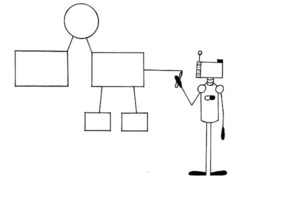Enterprise RPA is steadily catching on, especially among companies in the financial and technology sector. In a recent survey carried out by Protiviti, financial and tech-media -telecom firms reported the highest gains after implementing RPA. Those in the financial sector reported productivity improvement of 88% and 89% respectively.
In terms of revenue, financial companies reported gains of 82%, while firms in tech-media-telecoms reported increases of up to 90%. The companies attributed those gains to the pain points they had identified and automated.

Other companies that reported significant gains after automation include those in the following industries:
Read on to find out how big companies are using RPA to improve productivity and increase revenue.
Make Your Robots – Try RPA Tools
Policy issuance involves a lot of paperwork, and as you would expect, it is a time-consuming process for both the customer and the commercial underwriter. Insurance companies from around the world are automating policy issuance, and quickly realizing the benefits of RPA.
Zurich, a global insurer is a good example of a company that has managed to automate local policy issuance process using RPA. That has freed its underwriters from focusing on boilerplate policies to more complex policies that require greater skill and are more valuable.
Their automation journey included selecting automatable processes, optimizing, maintaining the robots, and most important, continuous improving the automation process. They implemented the pilot RPA in the United Kingdom, and only in the life insurance and pensions division.
Zurich has now managed to automate the issuance of policies in five different countries, which highlights how easy it can be to scale RPA automation. The automation brought about a 50% reduction in operational costs.
The savings realized were enough to prompt them to make an RPA rollout to other branches within two months.
A leading global insurance company that wishes to remain anonymous for business reasons, reported improved efficiency and cost savings, after automating its claims section. Initially, workers had to visit 26 different banking websites that their customers use to make policy payments.
The workers then had to use “smart searches” on the banking sites, to verify that customers had been making payments for each claim before they processed them. The workers did these searches and verifications four times a month, taking a total of 16 days to complete.
Apart from the time it took to complete the process, the workers sometimes made mistakes and did not collect the right information. Other times, they missed a customer’s claim. Once the RPA robots took over, that changed for the better.
The robots took only two hours to complete what the workers did in four days, and the bots eliminated all the human-errors. The insurance company was also able to save thousands of FTE hours annually, which translates to happy customers and lower claim processing costs.
In the banking industry, customers are always looking for answers because a simple error when transacting can be quite costly. That means customers are always asking questions when banking online and offline.
To help customers get fast answers, Royal Bank of Canada (RBC) uses RPA chatbots to provide quick answers and recommend additional resources for customers. The bots only forward non-generic customers queries to customer service representatives.
In the US, KeyBank has automated accounts receivable and invoicing services, using RPA running on a cloud-based environment. The result is a completely automated payment solution for its customers. Employees no longer need to spend time handling repetitive manual tasks, saving the bank hundreds of FTES each month.
Most importantly, the bank says customers are now happier and more satisfied. The RPA system has taken away their pain points when making or receiving payments.
For a long time, an Italian Telecommunication company struggled to deal with operational costs. These were costs related to securing and maintaining the integrity of data in their possession, software and hardware upgrades, and marketing campaigns.
Spending more in these areas meant there were fewer resources left to improve customers’ product and service experience. They were not devoting enough resources to develop a deeper relationship with their customers. Instead, their focus was on troubleshooting and fixing delays in service and product delivery.
They were also focusing more on pricing their products competitively, rather than improving their quality.
With RPA, the telecommunication company can now proactively detect failures and fixing them before customers raise complaints. They are also using automation to manage back-office workflow and to handle large volumes of repetitive rule-based tasks.
They now use automation to secure data by giving customers greater control over how the data is accessed using technologies such as 2FA. The automation changes have helped it to realize a 14% increase in productivity and over $3.3 million in operational cost reductions.
Moreover, they have automated over 95% of all call center customers’ queries using RPA, allowing their employees to focus on the 5% complex customer queries they cannot automate. That has enabled them to cut the call center response-time to an average of 1.5 minutes, from an average of 6 minutes.
If you have not started automating laborious process in your company, then you are missing a big opportunity to improve service and product delivery, as well as boosting your profits.
There is a lot more to gain from RPA than just automating repetitive manual processes. Contact us now, we can help you get started with enterprise RPA.